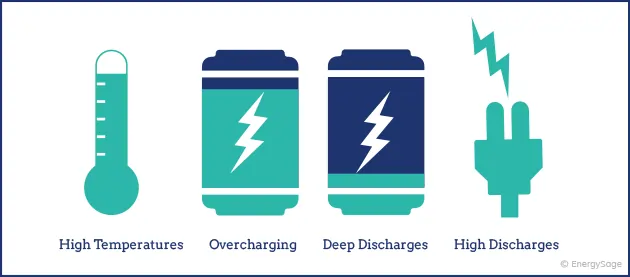
Range anxiety remains a key concern for prospective EV buyers. But how much distance can popular electric cars, bikes, and 3-wheelers cover in the real world on a single full charge? This comprehensive guide provides a range of benchmarks across various EV segments how many kilometers can an EV cover on a full charge?
Table of Contents
Factors Impacting EV Range
An EV’s certified range based on standard testing conditions may not match real-world figures. Here are the key factors impacting the actual achievable range:
- Vehicle Type & Segment – 2-wheelers cover less distance than 4-wheelers. Compact hatchbacks offer a lower range than premium sedans.
- Battery Capacity – The kWh rating of the battery pack directly correlates with range. Higher kWh = longer range.
- Weather Conditions – Winter cold temperatures can reduce range by 15-30%. Hot weather increases AC usage, which affects range.
- Driving Style – Aggressive acceleration and high speeds drain the battery faster, reducing range.
- Terrain Conditions – Elevation changes, hill climbs, etc., negatively impact range.
- Usage Patterns – Heavy payload, passenger load, and start-stop traffic diminish range.
- Route Conditions – The optimum range is achieved on flat highways. City driving with stops/starts reduces range.
Now let’s look at the real-world range across different EV categories:
Entry-Level Electric Hatchbacks
Tata Tiago EV

- ARAI Certified Range: 250 km
- Real-World City Range: ~180-200 km
- Real-World Highway Range: ~200-220 km
Entry-level 4-wheelers like Tiago EVs deliver about ~80% of the rated range under regular usage.
Premium Electric Sedans
MG ZS EV

- ARAI Certified Range: 419 km
- Real-World City Range: ~240-280 km
- Real-World Highway Range: ~300-340 km
Premium EVs achieve 60-80% of the rated range depending on conditions.
Electric SUVs
Hyundai Kona

- ARAI Certified Range: 452 km
- Real-World City Range: ~200-250 km
- Real-World Highway Range: ~280-320 km
MG ZS EV

- ARAI Certified Range: 419 km
- Real-World City Range: ~220-260 km
- Real-World Highway Range: ~300-340 km
EV SUVs deliver 50-70% of the advertised range under regular use.
Also read: Best Small Electric SUVs: Embracing Efficiency and Eco-Friendly Adventures
Performance-Oriented Electric Sedans
Jaguar I-Pace

- ARAI Certified Range: 470 km
- Real-World City Range: ~180-220 km
- Real-World Highway Range: ~260-300 km
Porsche Taycan

- ARAI Certified Range: 359 km
- Real-World City Range: ~150-180 km
- Real-World Highway Range: ~220-260 km
Sports EVs achieve a lower range – only 35-60% of the rated range.
Electric 3-Wheelers
Mahindra Treo

- ARAI Certified Range: 130 km
- Real-World City Range: ~90-110 km
Piaggio Ape Electrik

- ARAI Certified Range: 110 km
- Real-World City Range: ~80-100 km
Electric 3-wheelers deliver 70-85% of claimed range under real usage.
Electric 2-Wheelers
Ather 450X
- ARAI Certified Range: 116 km
- Real-World City Range: ~80-100 km
Bajaj Chetak
- ARAI Certified Range: 95 km
- Real-World City Range: ~70-90 km
Electric scooters and bikes achieve around 75% of the advertised range.
Key Takeaways on Real-World EV Range
In summary, here are the key takeaways on the actual range delivered by EVs:
- Premium segment EVs deliver 50-80% of the ARAI-certified range.
- Mass-market affordable EVs achieve 70-90% of the advertised range.
- City driving reduces range by 15-30% compared to highway.
- Hot weather and low temperatures reduce the range by 10-25%.
- A careful driving style can extend the range by 10-15%.
- The real-world range is satisfactory for most buyers’ daily commute and in-city needs.
- Advancements in battery tech are expected to improve range metrics further.
While maximum certified range is rarely achieved, most EVs deliver sufficient real-world range for average urban transportation needs on a full charge.
Recent News Around EV Adoption in India
Here are some latest updates from India’s fast-growing EV segment:
- New Launches – Tata Tiago EV launched as the most affordable 4-wheeler EV option starting at Rs 8.5 lakh. Also unveiled Avinya concept EV.
- FAME-II Extension – Central scheme providing EV subsidies extended till 2024 with increased budgetary allocation.
- Ola Electric Car – Ola Electric aims to launch an indigenous electric car by 2024. Raised $200 million in new funding.
- Ather Expanding – Ather Energy is opening a new manufacturing plant. Planning massive 6500+ charging grid expansion in 100+ cities.
- Lower GST – GST on EVs reduced from 12% to 5% to boost affordability. Expect further cuts.
- State EV Policies – Delhi, Maharashtra, Kerala etc., announce draft state policies to accelerate EV shift.
- Charging Infra Push – 26,000+ public EV charging points and 1,800+ swap stations approved across metros and highways.
The positive developments on policy, infrastructure and product fronts point towards a bright future for EV adoption in India in the coming years.







